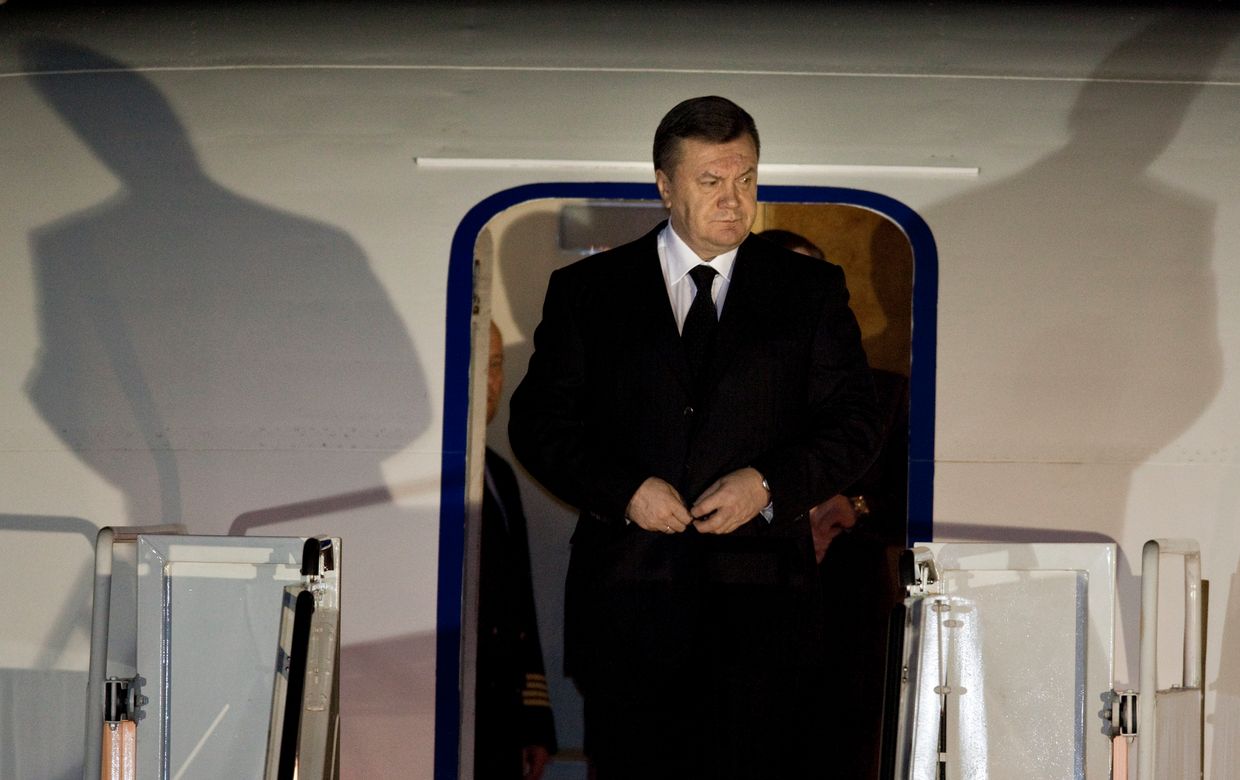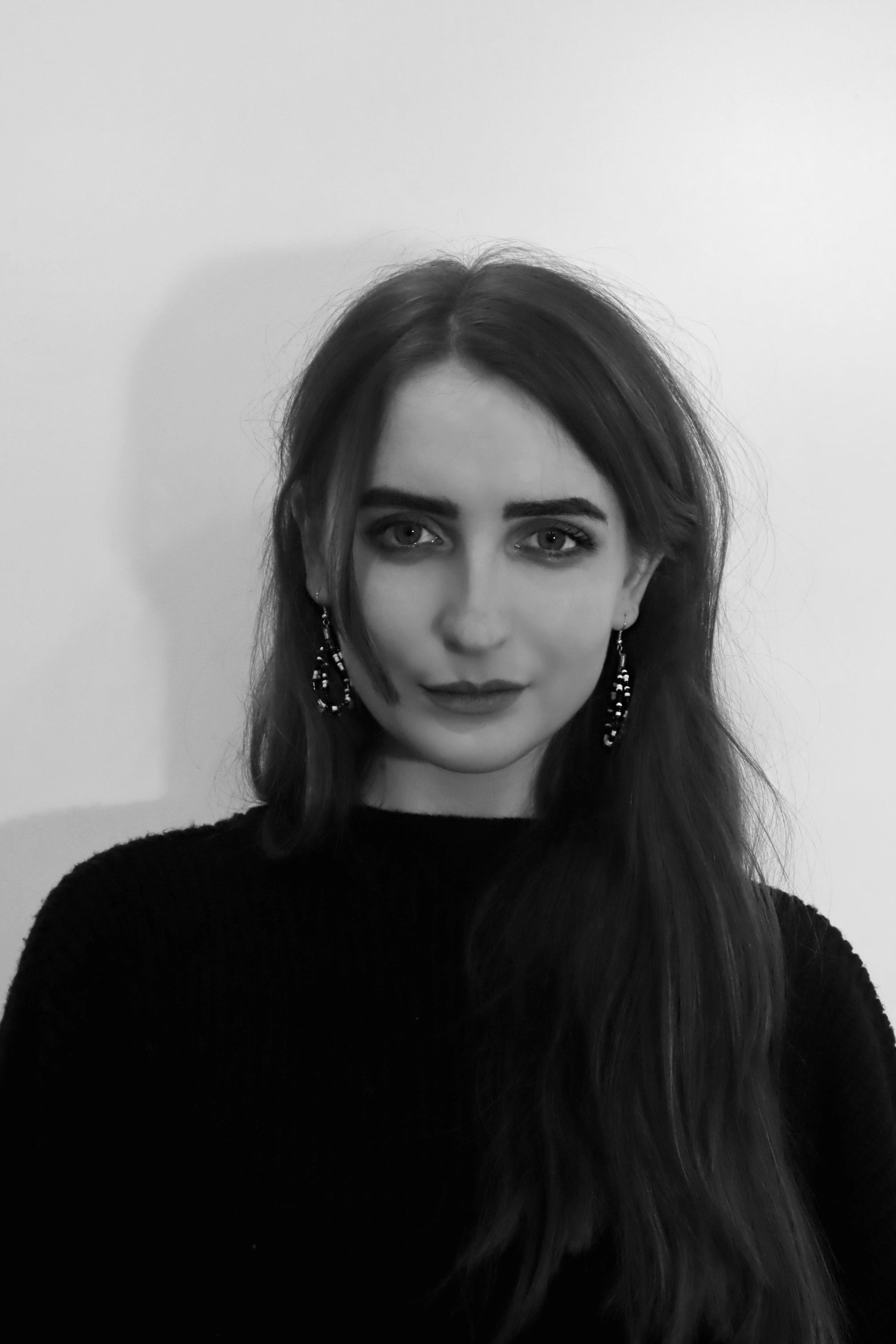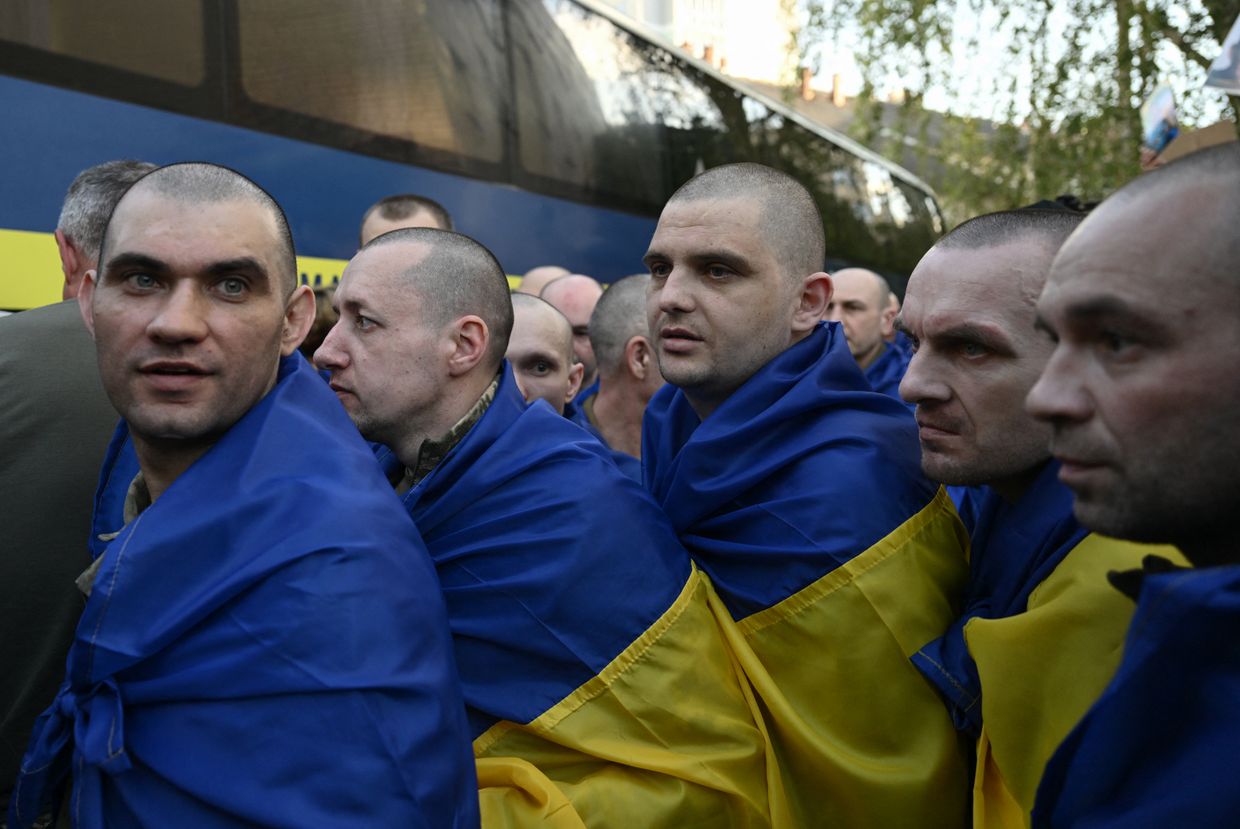When reports emerged that the Kremlin had been allegedly planning to install former Ukrainian President Viktor Yanukovych in a leadership role in the event they captured Kyiv following the start of Russia’s full-scale invasion in February 2022, Ukrainians were in disbelief.
Yanukovych had been flatly rejected by the Ukrainian people twice, first during a presidential run in 2004 and then in 2014 when he was ousted following the successful EuroMaidan Revolution.
When Yanukovych, then serving as Ukraine’s fourth president, refused to sign an Association Agreement with the European Union in November 2013, choosing instead to forge closer ties with Russia, Ukrainians took to the streets to demand the president reverse course.

The protests soon sparked a revolution that grew to demand not only Yanukovych sign the agreement but also an end to the endemic corruption and cronyism that the Yanukovych regime epitomized.
After security forces in Kyiv killed nearly a hundred protestors in February 2014, Yanukovych fled the country, seeking exile in Russia.
Yanykovych is Ukraine’s most controversial and infamous president to date.
What did Viktor Yanukovych do before becoming president?
Yanukovych was born in 1950 into a working-class family in the eastern Ukrainian city of Yenakiieve in Donetsk Oblast. His education and academic background have been the subject of scrutiny several times, with many seriously questioning his qualifications.
According to his official biography, he is a graduate of a mining vocational school in Yenakiieve and holds a master’s degree in international law and a doctorate in economics from the Donetsk-based Institute of Economic and Legal Research of the National Academy of Science of Ukraine.
An investigation by the Ukrainian media outlet Ukrainska Pravda revealed, however, that his classmates do not recall Yanukovych ever studying at that institute. The former president has also been accused of plagiarizing his alleged academic work.

Yanukovych is also known for his criminal background. In his late teenage years and early adulthood, he was convicted and incarcerated for robbery in 1967 and assault in 1970. His criminal records were wiped clean in 1978 after a court reviewed his cases and ruled him not guilty.
In his early professional career, Yanukovych worked as a gas engineer and further specialized as a car mechanic. During the first part of his political career, he worked in different management positions, such as the General Director of the large Donbastransremont and Ukrvuglepromtrans manufacturing companies as well as the Donetsk Regional Motor Transport Production Association.
Yanukovych’s political career grew quickly after he became vice-head of the Donetsk Oblast Administration in 1996. A year later, he became governor of Donetsk Oblast.
Ukraine’s second president Leonid Kuchma named him as prime minister in 2002, and in 2003, Yanukovych became the head of the Party of Regions, a popular pro-Russian political party at the time.
How did he become president?
Yanukovych, at the time prime minister, first ran for president in 2004, competing against ex-Prime Minister Viktor Yushchenko. Yanukovych and his campaign were accused of trying to rig the election results, igniting a series of protests now known as the Orange Revolution.
The revolution, which brought together an estimated 500,000 protestors on the streets of Kyiv, resulted in Ukraine’s Supreme Court ruling that the level of fraud made it impossible to determine a winner, forcing a revote. Yushchenko won the election in January 2005 and was president until 2010.
Following his defeat, Yanukovych and his Party of Regions – by this time the opposition – began their battle against Yushchenko and the then-Prime Minister Yulia Tymoshenko, openly questioning their credibility and conducting campaigns to discredit them.

A political rivalry between Yushchenko and Tymoshenko caused cracks in their relationship. The Party of Regions won the 2006 parliamentary elections, and throughout 2006-2007, Yanukovych served as prime minister of Ukraine.
Yushchenko dissolved the parliament in 2007, and once again, a coalition of Yushchenko and Tymoshenko gained the majority in parliament, forcing Yanukovych to step down.
After his defeat in the 2004 elections, few believed he would be able to come back victorious. Yet he won the presidency in 2010 with 48.89% of the vote, receiving three percent more than Tymoshenko.
What policies and actions is he known for?
One of the first things Yanukovych did when he became president was to change the form of government from a parliamentary-presidential system to a presidential-parliamentary one, greatly expanding the powers of the president. Many critics saw this move as an unprecedented power grab.
During Yanukovych’s tenure, the parliamentary majority was held by his Party of Regions and their political allies or proxies. Yanukovych’s government was known to be extremely corrupt and was consistently accused of cronyism and lavish spending.
The inner circle of Yanukovych’s administration, often referred to as “the family,” consisted of two of his sons, Oleksandr and Viktor, the godfathers of his children, and close friends, most of whom were from Ukraine’s eastern Donbas region.

In the three years of Yanukovych’s presidential tenure, he and his clan managed to illegally seize over 7,000 businesses in Ukraine through coercive means, according to the Anti-Raiding Union of Ukrainian Entrepreneurs. The firms they took over illegally were often forced to pay a “tribute” from their corporate gains or completely cede ownership to the “family.”
The former president and his son also illegally acquired the 350-acre Mezhyhirya Residence outside of Kyiv. It is unknown how much they paid for the property. The residence had a private zoo, stables, tennis courts, a golf course, fountains, and gold-laden furniture, including a toilet.
Yanukovych, in attempting to strengthen the country’s ties with Moscow, signed one of Ukraine’s most ill-fated agreements — the Kharkiv Pact — with then-President of Russia Dmitry Medvedev on April 21, 2010. The document prolonged the stay of Russia’s Black Sea Fleet in Crimea for another 25 years up until 2042 in exchange for a 30% discount on gas deliveries.
The pact was signed without parliamentary debate or public discussion. The deal also allowed Russia to station its troops in Sevastopol, Crimea. Russia’s Black Sea Fleet took an integral part in Russia’s 2014 occupation of Crimea.

Yanukovych also made attempts to distance Ukraine from its national identity, stressing that the Russian language was being “too politicized” and that a so-called “Russian-speaking minority” needed to be protected. This position echoed Russian propaganda that has been claiming falsely for years that Russian speakers in Ukraine were under threat.
In 2012, Yanukovych’s government enforced a new so-called language law that allowed using Russian as an official language, particularly in regions where the number of Russian speakers was more than 10 percent.
Today, Moscow uses a fabricated “language problem in Ukraine” and the false “need to protect Russian speakers in Ukraine” to justify its aggression against its neighbor. There has never been any proof to suggest that Russian speakers have been the target of persecution in Ukraine.
How and why was Yanukovych removed from power?
When Yanukovych refused to sign an association agreement with the European Union in November 2013, instead deciding to strengthen ties further with Russia, hundreds of people gathered in Kyiv’s central Maidan Nezalezhnosti (Independence Square) in protest against the government’s decision.
The peaceful gathering took a turn when Yanukovych’s government sent the Berkut special police forces to force them out from the square. This violent response shocked the public. The next day, thousands of people gathered in the streets. Within weeks, the protests had swelled into a full-scale revolution.

For the next three months, Ukrainians camped out on the Maidan, demanding that the country move toward European integration, a change of government, early presidential elections, and that those responsible for the violence be held accountable. The revolution involved several violent clashes between protestors and pro-Kremlin special services who attempted to clear the Maidan of the protestors on multiple occasions.
In the midst of the revolution, on Jan. 16, 2014, the government adopted a series of “anti protests laws” that restricted freedom of speech and assembly. The move only added fuel to the fire as protestors refused to obey these new draconian laws.
Between Feb. 18-20, the Berkut special forces gunned down more than 100 protestors in the streets of Kyiv. Those killed are now memorialized in Ukraine as the “Heavenly Hundred.”
In an attempt to bring an end to the revolution, Yanukovych and leaders of the parliamentary opposition signed an agreement “to end the political crisis” on Feb. 21, 2014.
The agreement called to return the country to a parliamentary-presidential style of government, early presidential elections, the removal of security forces from downtown Kyiv, and an end to the violence.

But it was too late. The Ukrainian people continued to demand for Yanukovych’s resignation.
Understanding that he had lost the support of the people, he fled to Kharkiv late on Feb. 21 and then sought exile in Russia, leaving behind his lavish Mezhyhirya estate.
In his absence, activists gained access to the property, uncovering copious amounts of evidence of Yanukovych and his clan’s crimes against the state.
What has Yanukovych been doing since he fled Ukraine?
Once living in exile in Russia, Yanukovych supported the Russian annexation of the Crimean Peninsula in the spring of 2014 and Russia’s invasion of eastern Ukraine.
The pro-Russian ex-president has been sanctioned by Ukraine and the European Union, and in 2015 was stripped of the title of President of Ukraine and all the benefits that come with it.
Later on, in 2019, Ukraine found Yanukovych guilty of a number of crimes, such as treason and aiding Russia’s war, and sentenced him to 13 years in prison in absentia.

When Moscow began its full-scale invasion of Ukraine in February 2022, the Russian security services had reportedly planned to set up Russian proxy administrations which would control Ukraine, with Yanukovych potentially as a key leadership figure.
According to the Washington Post, Yanukovych was in Belarus in March 2022, waiting for his chance to return to Ukraine in the event Russia managed to capture Kyiv.














